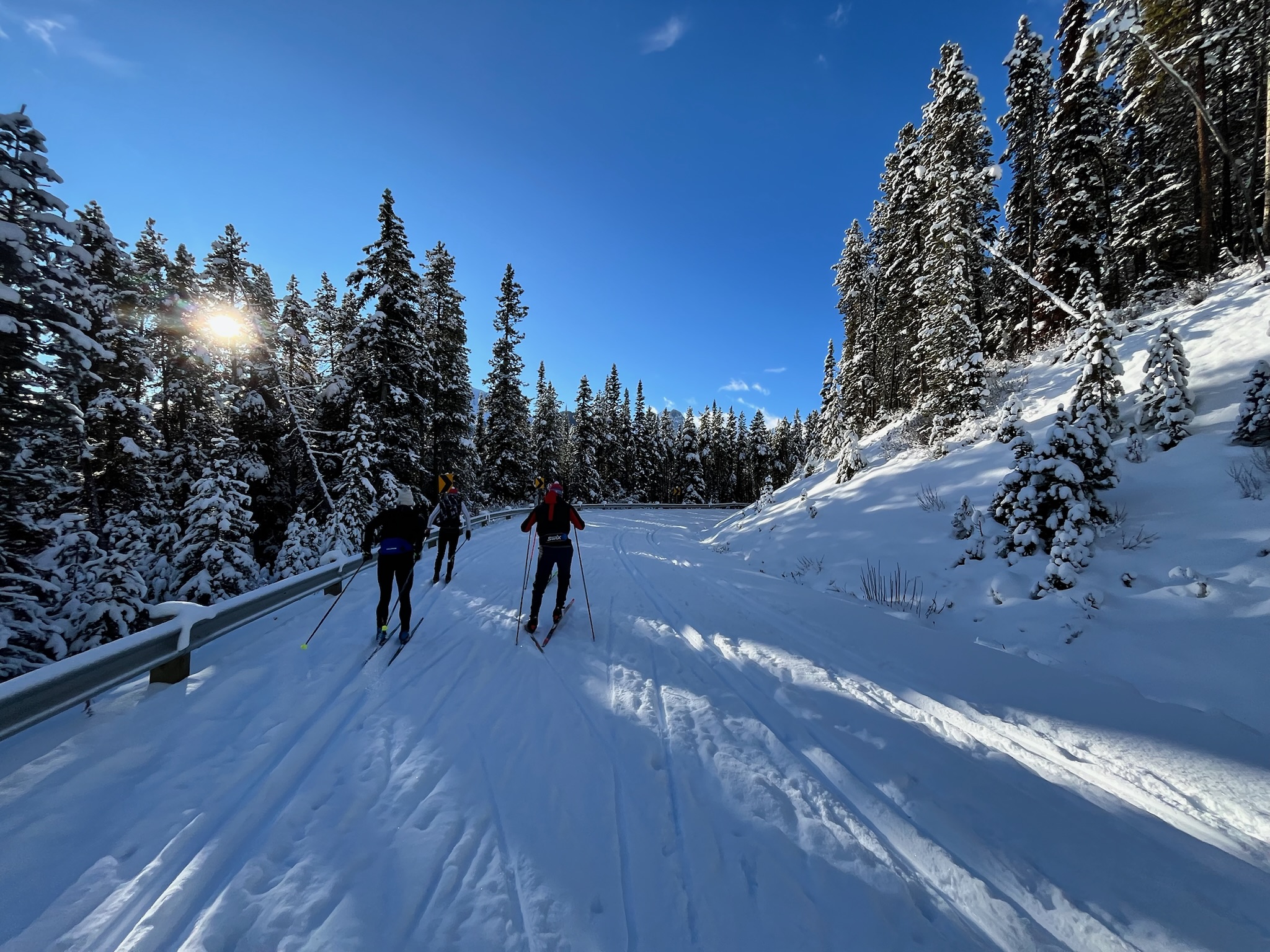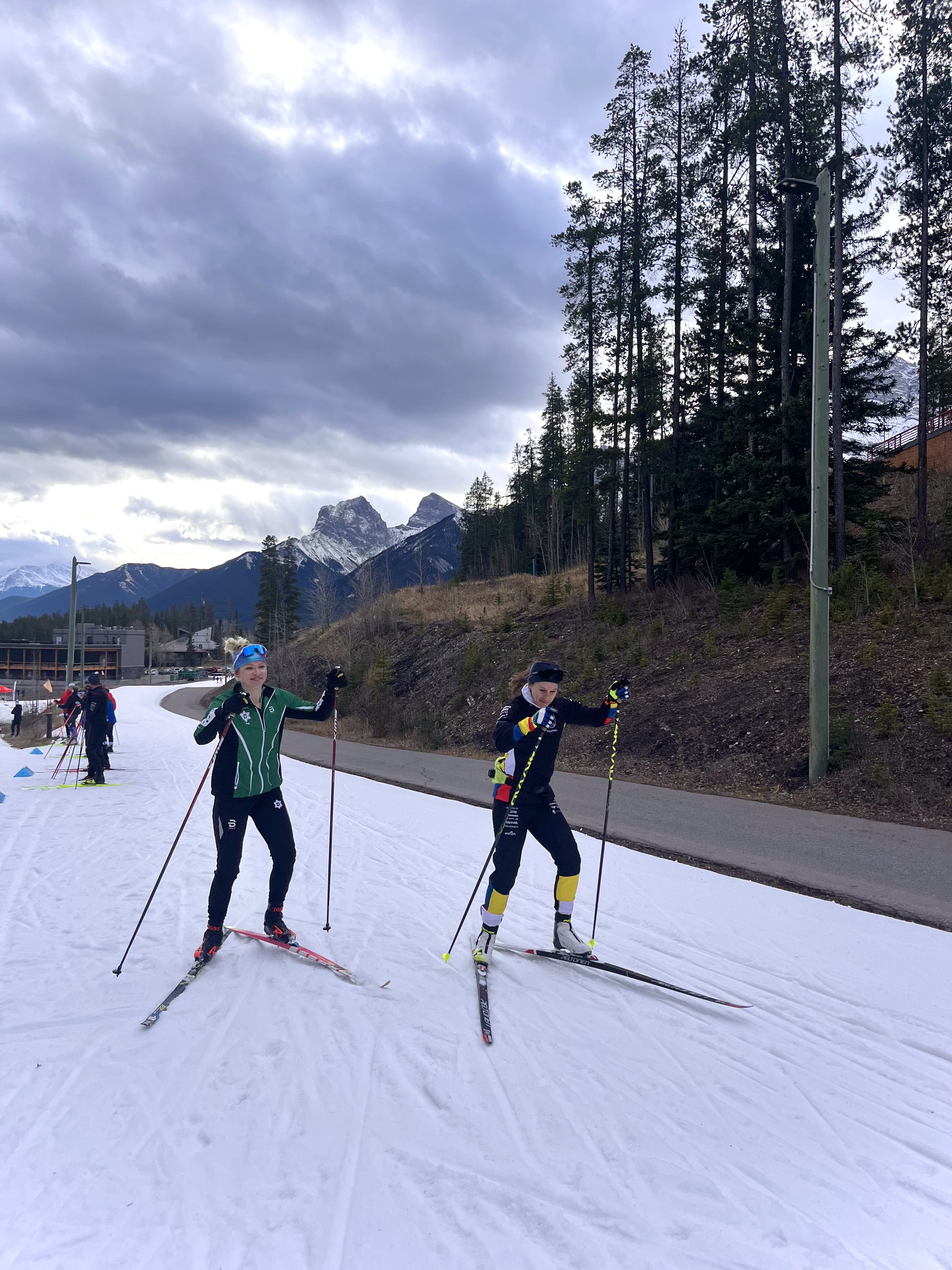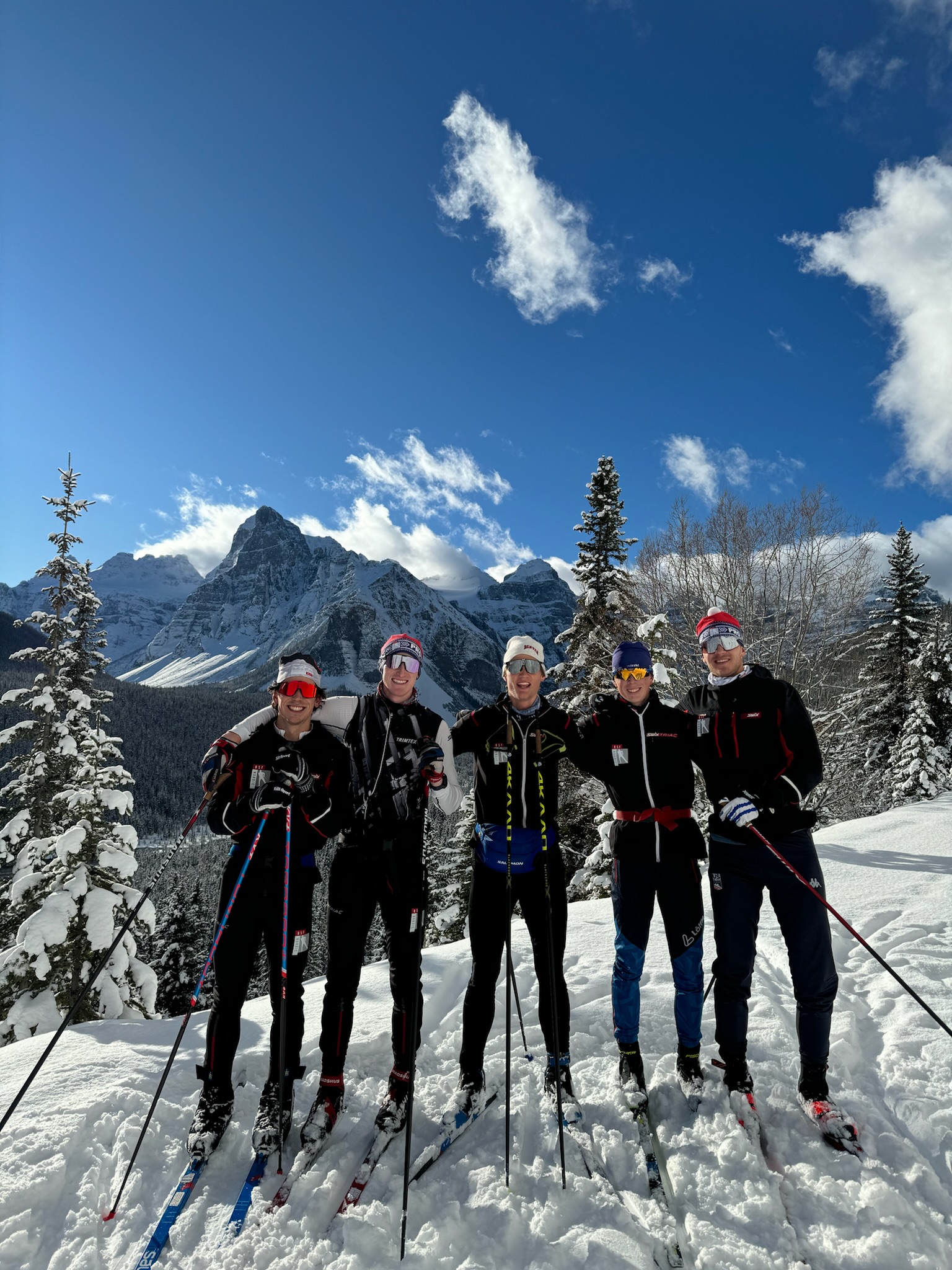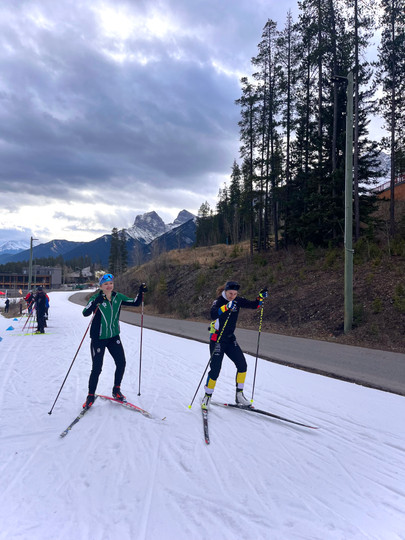Posted by Annika Landis on Nov 20th 2024
The Factory Team at Frozen Thunder

This past week, the Factory Team was up in Canmore, Alberta for a training camp known as Frozen Thunder. Frozen Thunder is a loop of mostly man-made snow where teams can get on snow in the early season, which is a huge advantage in making the transition from dryland to skiing more smooth. The loop this year was about 4 kilometers total, which is less than in previous years, but still plenty of snow to have a high-quality training camp.
Our main focus this week was to readjust to training on snow and log some high quality time on skis. At the beginning of the winter, focusing on technique is crucial to effectively transferring the improvements we made over the summer onto snow. Rollerskiing, while a great way to maintain ski specific training and technique over the summer, is not entirely the same as skiing on snow. For example, the power return on rollerskis is much higher than on snow, so we get used to skiing with more force rather than finesse.
You might have noticed this with double poling and V2 in particular, where you have to put in a bit more effort on snow to get the same amount of speed or distance as you would on rollerskis. This means that we really need to focus on using efficient technique to maximize our glide and energy return from each push of our skis and poles.
To do this, Simon and I did a lot of no-pole drills where we exaggerated the amount of glide on each ski, and what we noticed when re-watching our video from these drills, is that what we thought was ‘exaggerated’ glide just looked like normal skiing. The lesson there is that you are never gliding as long as you think you are, and with any technique change, what we perceive to be exaggerated, is really us feeling skiing outside our technique comfort zones (and into the zones where we can actually make lasting changes!)
Here are a few skate drills you can try out on your next ski:
No-pole skiing. Focus on keeping your core stable (no twisting the upper body) and fully transferring your weight from ski to ski.
No-pole w. exaggerated glide. To progress the basic no-pole drill, see how long you can glide on each ski before shifting your weight. It is helpful to do this on a gradual downhill, so that you have some free momentum.
V2 'double tap' a.k.a V4. Start with your normal V2, then instead of poling just once on each side, you are going to pole twice before shifting your weight to the other ski. For beginners, the first pole plant will be more of a tap, but as you progress and get more comfortable standing on a flat, gliding ski, you can extend the follow-though of the first pole push. The goal of this drill is to teach us patience, and allow the ski to glide further before we push onto the other ski.
V2 w. 3-second hold. We are putting everything from the first 3 drills together and adding our poles. For this drill, we are taking all the exaggerated glide from our no-pole and V4 drill and integrating it into our normal V2 technique. All you are going to do is at the top of your pole plant, you are going to count to three before shifting your weight to the other ski. This has the same effect as the V4 drill, but feels a bit more natural because we are only poling one time.
Head to Nordic Team Solutions for more drills on how to make a smooth transition from dryland training to snow.


In the middle of the week, the venue hosted two races: a classic sprint and a freestyle 10k, which was a good chance to put some of our technique work to practice in some faster skiing.
The classic sprint was held in the “King's/Queen’s Court” format, which means that all athletes race the qualifier and all three sprint heats, instead of athletes getting progressively eliminated until only six remain. This is a great format for early season races, because it allows developing sprinters to practice skiing through the rounds. As marathon skiers, sprinting is not either of our fortes, but it is still a really good workout for developing fast-twitch muscle fibers while simultaneously increasing the ability of muscles to tolerate lactic acid.
The second race, a 10k Freestyle, was a good opportunity to get back into a race mindset and remember what it is like to take a visit to the pain cave. Results in these races don’t matter, so it is mostly about getting back into the rhythm of pre-race routines, race strategy, and building some race fitness into our training.

